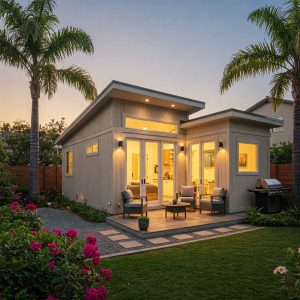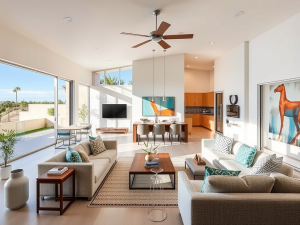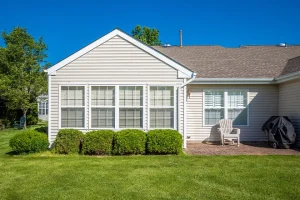The residential construction industry is a dynamic and ever-evolving sector that shapes the spaces we live in. From rising material costs to the increasing adoption of smart technologies, several key trends are reshaping the landscape of how homes are built and designed.

1. Sustainability Takes Center Stage
Environmental consciousness is at an all-time high, and homeowners are increasingly seeking eco-friendly options for their dwellings. This translates into a surge in demand for sustainable building materials, energy-efficient appliances, and renewable energy sources like solar panels. Prefabricated homes, constructed off-site with controlled materials and processes, are also gaining traction due to their reduced environmental impact.
2. Smart Homes for a Smarter Future
Technology is seamlessly integrating into residential construction, transforming homes into connected hubs of convenience and comfort. Smart thermostats, lighting systems, and security features are becoming commonplace, allowing homeowners to control their living environments remotely. Voice-activated assistants and AI-powered appliances are further blurring the lines between physical and digital spaces.
3. Prioritizing Wellness and Wellbeing
The pandemic has underscored the importance of creating homes that promote physical and mental wellbeing. Open floor plans that foster connection, dedicated spaces for home offices and gyms, and an emphasis on natural light and ventilation are all contributing to this trend. Additionally, features like touchless faucets and antimicrobial surfaces are gaining popularity in response to hygiene concerns.
4. Remodeling Reigns Supreme
With rising interest rates and a competitive housing market, many homeowners are opting to renovate existing properties rather than building new ones. This has led to a boom in the remodeling industry, with kitchens, bathrooms, and outdoor spaces being the most popular areas for upgrades. Homeowners are also seeking ways to maximize functionality and create versatile spaces that can adapt to changing needs.
5. Embracing Diversity and Inclusion
The residential construction industry is recognizing the importance of catering to a diverse range of homeowners. This includes designing homes that are accessible to people with disabilities, incorporating cultural sensitivities into architectural styles, and offering flexible living options for multigenerational families.
Staying Ahead of the Curve
By understanding these key trends, residential construction professionals can adapt their strategies and cater to the evolving needs of homeowners. Embracing sustainability, technology, and wellness-focused design will be crucial for success in the years to come. Remember, the home is more than just a physical structure; it’s a reflection of our values, aspirations, and lifestyles. As the industry continues to evolve, it has the potential to shape not just the way we live, but also the way we connect with each other and the world around us.
In addition to the trends mentioned above, here are a few other noteworthy developments in the residential construction industry:
- The rise of modular construction, which offers faster and more efficient construction timelines.
- The increasing popularity of tiny homes and micro-apartments, driven by affordability concerns and urban living trends.
- A growing focus on community living, with the development of cohousing communities and mixed-use spaces.
These trends are just a glimpse into the exciting future of residential construction. By staying informed and adaptable, industry professionals can position themselves for success in this ever-changing landscape.
I hope this blog has been informative. Please let us know if you have any other questions.




